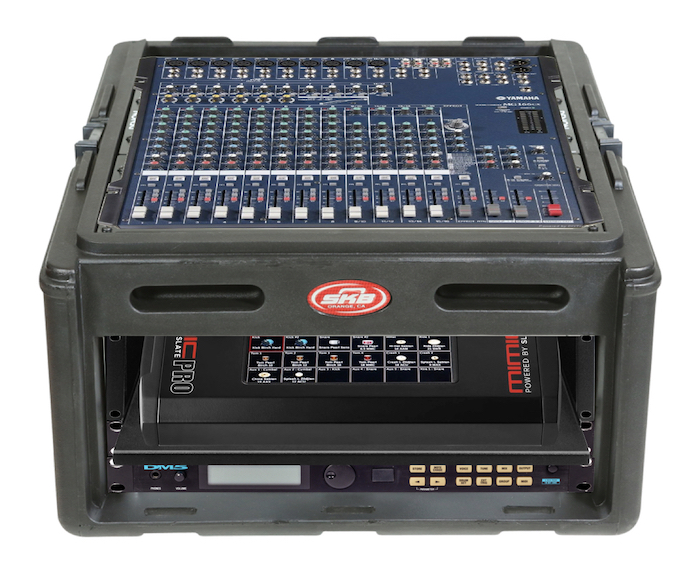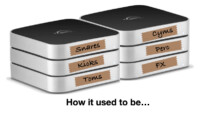By the sound of it gigs in the UK are (very slowly but) gradually getting back to some form of normality. I hope they are where you are on the planet. Also, by the sound of it, more drummers are taking their electronic kits out than before (could be coincidence) to do the same jobs/gigs that they used an acoustic kit for before the great global lockdown.
There a few very good reasons why this might be happening, from ‘many drummers have just got used to playing their electronic kits for such a long period that it has become ‘the new norm” to (my favourite) ‘they have actually learnt how to use them properly now and have realised quite how useful they can be’.
I’ve mentioned most of this stuff before, but if you are going to move your electronic kit around, you need to do it properly so nothing gets damaged. But also it need to be done so it is easy to set up, convenient and quick.
I’m sure we have all seen enough function bands who use electronics setting up to know how not to do it. Theres nothing worse than watching someone at a gig or function build the drumrack from scratch, then take each pad out, put it on the rack, get the module out and put it on the rack and then wire the whole thing up. Not only does it take ages but its not convenient, looks rubbish, plus you just know the drummer hasn’t got a backup if anything goes wrong.
If you’ve ever seen a touring band setting up and breaking down, you’ll probably have been impressed with the speed which stuff gets done. Everything gets put into a flightcase, sometimes hardly dismantled, and the whole rig gets wheeled in or out of the trucks in no time at all.
 OK, so 99% of us don’t have massive flightcases, techs, or trucks to move the gear around in, but we can borrow a few ideas from the big boys. Firstly, why use a drumrack? Its not simpler, or easier to move round, You can use stands to set up the whole kit, just like an acoustic kit, and its much easier to pack away quickly without a large case. If you have the space, get an extra long stands case, just collapse the legs of each stand, remove the booms (all labelled up of course) and you can get the stands away in a couple (literally) of minutes.
OK, so 99% of us don’t have massive flightcases, techs, or trucks to move the gear around in, but we can borrow a few ideas from the big boys. Firstly, why use a drumrack? Its not simpler, or easier to move round, You can use stands to set up the whole kit, just like an acoustic kit, and its much easier to pack away quickly without a large case. If you have the space, get an extra long stands case, just collapse the legs of each stand, remove the booms (all labelled up of course) and you can get the stands away in a couple (literally) of minutes.
As far as the drum pads are concerned, you need to store them on edge as the weight of a pile of pads can damage them. However, cymbal pads need to be stored flat as the edge switches get damaged if stored on the edge. If you do store them on their edges then you need to make sure that the playing area is pointing upwards so theres no pressure on them.
I recently came across a really good electronic drum case from a rather large retailer based in York (UK readers will probably know who I’m taking about – they sell gear for music). It’s a big flat wide case on wheels (like a wide stands bag) has Velcro sections so will take any sized pad. As well as taking a whole kits worth of pads, I could also lay my cymbal pads across the top, put the leads in a pocket and move the whole kit with one hand. It was also very reasonable priced.
But the real time saver comes with the module and all the associated electronics. Lets assume you have your module, and maybe a mini mixer so you can mix your own in ear monitor sound with the foldback (rest of band) and anything else you might need (such as cymbal overheads if you are using real cymbals). Rather than plug everything together and resting it all on a case or box, how about everything is already to go in a small 19” flightcase – you take off the front, pull out the module, take off the back, unravel the cable snake and plug them into the pads, take the top off to reveal the mixer, plug in the mains and the foldback and away you go? Less than five minutes.
This might sound expensive but it really need not be. Firstly you need a DJ mixer flight case with a removable top, front and back . You install the mixer under the top lid so its ready to go as soon as you remove it. You put your main module on a sliding rack shelf (£30ish off eBay) just under the mixer so you just pull it out (its already all wired in) and turn it on. At the bottom of the case you bolt in a cheap rack mount module like the Alesis D4, DM5, Yamaha TMX or RM50 (all available for around £50 off eBay if you are lucky). This last module is only for backup, so you only need to set one decent sounding kit up just to get you to the end of the gig if the worst comes to the worst and your main module crashes, fails or some other catastrophe.
As for how you secure your module onto the sliding rack shelf, that is easy too. You have two available methods. If your module is light in weight, some industrial Velcro will do the trick. If your module is heavier, expensive or rare, then drill holes in the rack shelf (if it doesn’t have them already) and either bolt it on to the shelf using the bolts that normally hold the module mount on, or use cable ties to secure the module firmly to the shelf. You can easily join cable ties together to make longer ones, so loop them all round the module (making sure they don’t get in the way of any button pushing that it required) and the job is good. If the flightcase is tilted in transport (and it will be) your module wont get damaged.
You can cable tie the cables together to make a loose snake and roll this up and leave it in the back of the rack. When I need to set up, I just open the rear door, uncoil the ‘snake’ and plug it into the pads.
The bit which confuses most people is how to wire up the two modules. This actually couldn’t be easier and it uses a patchbay (£30 upwards from eBay) like you’d find in a studio.
 Patchbays have a ‘half normalled mode’ that allows you to split one input to two outputs. If you connect one set of outputs to your main module and the other set to the second ‘backup’ module, you will be able to trigger both at the same time from one pad input. Then, if your main module dies, mid gig, you just raise the volume of the second module, turn down the main module, and you carry on. Simple and it takes under five seconds to change.
Patchbays have a ‘half normalled mode’ that allows you to split one input to two outputs. If you connect one set of outputs to your main module and the other set to the second ‘backup’ module, you will be able to trigger both at the same time from one pad input. Then, if your main module dies, mid gig, you just raise the volume of the second module, turn down the main module, and you carry on. Simple and it takes under five seconds to change.
So thats it. Apply a little thought and make your life easier. It doesn’t have to be hard.
Simon Edgoose
November 2021















